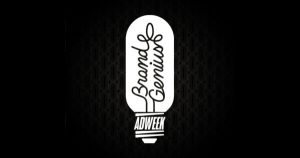
As a CFO in the advertising industry, the one constant that I’ve come across is change. Maybe it’s a recency bias, but the past few years have been seemingly more volatile than at any point I can remember. The challenges have been harder and more ill-defined, the answers weren’t straightforward and the outcomes have been equal parts scary and exciting.
There is a truly exciting crop of new agencies that are opening up and making a mark in the industry. But despite doing great work, one pain point is how to pivot from being an employee to being a business owner, and all of the nuance that goes into that change.
At Flower Shop, some of the conversations we find ourselves having revolve around some of these core issues. Can I afford to hire someone? How well is my business running? Important questions that, when accounted for, can put a company in a position to make smart decisions and grow.
Running a business is hard. In the same vein that I find a new crop of creative agencies to be exciting, it’s also incredibly scary as well. Small agencies typically come from bigger agencies and sometimes lack the knowledge of what goes into running a creative agency.
In that spirit, I offer up a few thoughts for new agencies as they navigate the waters of being business owners and entrepreneurs.
Create and focus on scalable behaviors
For so many agencies, finance can be a bit of a black box with success loosely defined by topline revenue and margin. I recall an insight from earlier in my career that sometimes the only thing that changes for a growing business is where the comma and the decimal point go on the P&L.
If processes, ways of working and finance are prioritized from day one, they become a fixture in the culture of the business. A strong financial foundation and investment upfront will make growth and scaling incrementally easier.
Focus on the right financial metrics
Three really clear areas of finance should be the focus of any owner: Cash flow, budget forecasting and pricing.
A forward-looking cash flow model is essential to businesses of all sizes. In creative services, having a 90-day rolling forward-looking model is a foundational tool. It forces a business owner to understand their current cash position, grasp the inflows and outflows of the business, and what sort of capital requirements could be needed to make an investment or hiring decisions.
The second essential tool is having a forecast model that can highlight how the business is performing. Any model is only as good as the information that’s in it, so spending time on this area of the business is the best way to ensure that you’re looking at the right information.
Related Video
When this is updated and working correctly, you should have all your revenue (both forecasted and recognized) in one place. You can determine if you’re spending too much on labor (or not enough), how much you’re spending on your overhead and get a sense of where your margin is projected to be, along with any corrective action that needs to be taken. This should work in tandem with your cash flow model as cash typically trails accounting profit.
Lastly, prioritizing and understanding pricing is the third leg of the stool. It’s been a recurring topic in the industry how client budgets have decreased, the role of procurement has increased and agencies are being asked to do more work. Given these current market realities, it becomes essential for agencies (especially smaller ones) to understand the costs that go into making work for clients.
Knowing how long something will take, how many people will be needed and what types of people should be a part of the process are all important factors to understand your cost basis. Adding in your overhead ratio should give you a clear picture of what your true cost is and, from there, help to determine a price that protects the agency from taking on work at a price that is unsustainable and could put the business in jeopardy.
Putting it all together
Making work that delivers on clients’ marketing goals should always be the north star for any creative service company. Without having a solid foundation of work, it’s incredibly difficult to stand out. Great work begets more work. Winning new business and getting to make creative work is incredibly rewarding. It’s why so many of us chose to get into this industry and the desire to create an agency with one’s vision requires such a passion and energy for the craft.
But it’s not always enough. The above elements may not be the most fun aspects of running a business. They don’t specifically show up in a campaign or film, but they are the areas and behaviors that can help a business accomplish the goals it sets out to achieve and sustain them for the long term.





